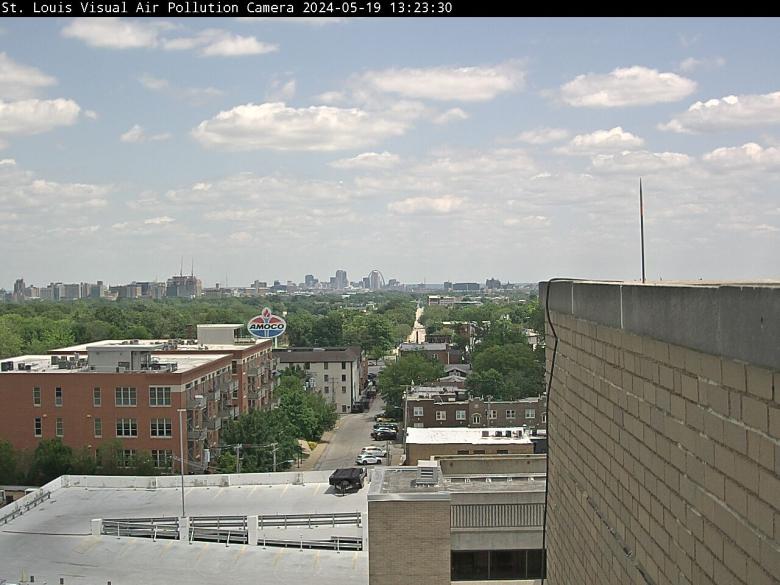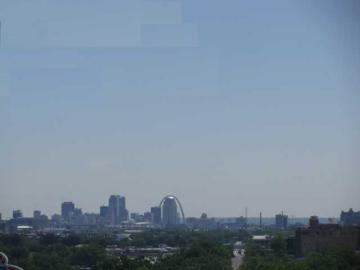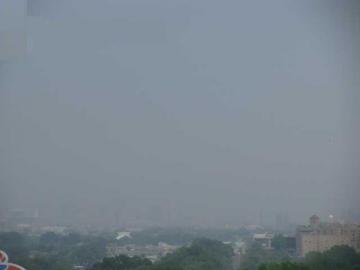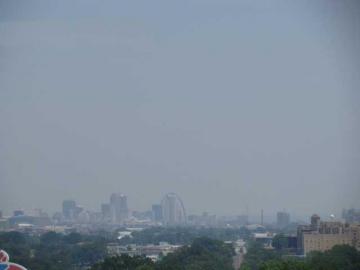The St. Louis camera is located atop SSM St. Mary’s Health Center, 6420 Clayton Road in Richmond Heights.
Please go to SSM St. Mary's - St. Louis Hospital's site to learn more.
The Missouri Department of Natural Resources thanks St. Mary’s for its active support of this public service project to improve our region’s air quality and overall health.

This image is updated every minute.
Visibility Examples
Other Web Cameras for St. Louis
General Information
Though visual air pollution is not a direct measure of the level of air quality, it can give the viewer a clue to the healthfulness of ambient air. Many of the air pollutants that contribute to the formation of the harmful, but invisible, ozone also impact clarity of the air.
Smog, a grayish red haze, forms in the air during hot summer days. Smog forms when nitrogen dioxide, hydrocarbons from gasoline vapors, automobile exhaust, small dust particles, carbon particles and other industrial pollutants mix in stagnant air. Smog reduces visibility and because of its chemical activity often produces ozone in unhealthful concentrations.
High levels of ozone are known to increase breathing difficulty for people that suffer from asthma, heart disease and emphysema. Ozone also increases the number of cases of bronchitis in children and senior citizens. Long term exposure can even cause healthy young adults to experience difficulty breathing, especially those that exercise or work for long periods outdoors.
American Academy of Allergy Asthma and Immunology Pollen and Spore Counts
IQAir - Air Quality in St. Louis
U.S. Environmental Protection Agency's partnership AirNow Home Page



